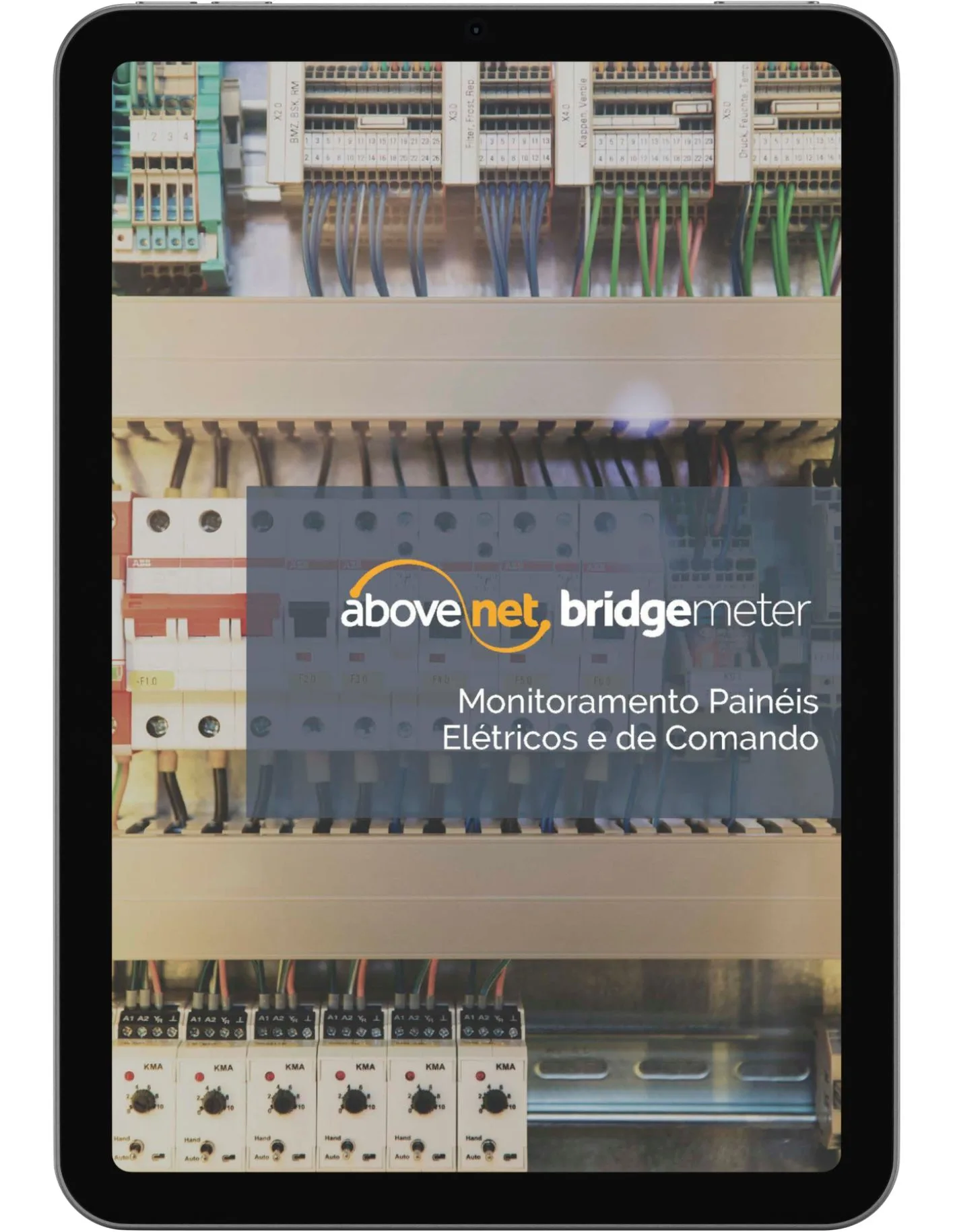Artificial Intelligence (AI) technologies are revolutionizing the way electrical actives are maintained. AI allows organizations to get a competitive advantage by taking advantage of data monitoring data to make better data based decisions, minimize inactivity time, optimize resources, and improve operational effectiveness.
Cloud computing, IoT and Broadband capacity have made these advantages qualified as possible.
Today, the world continues to evolve digitally due to increased remote work and growing technological advancement in areas such as robotics and artificial intelligence. The need for digitization has become more significant in many industrial sectors, regardless of the competitive scenario.
Digitization is a prerequisite for each organization as they strive to become more efficient and achieve sustainability goals. This evolution fosters the importance of improving thinking, structure, operation and development, moving proactively towards more innovative ways to solve problems and adapt to the always developing digital landscape.
A growing change to electricity is inevitable for each organization, and to ensure ideal operation, reliability and safety of staff, proper maintenance of electric infrastructure is as essential as maintaining a stable energy supply.
In many industries, organizations have trusted the traditional method of maintaining electrical assets. Maintaining traditional assets revolves around periodic inspections, preventive maintenance, reactive repairs or failure response.
Historically, there are flaws in the traditional approach to asset maintenance, which can result in time of unparabed inactivity and higher maintenance costs. These flaws negatively impact continuous operations on industries compared to modern maintenance approaches, driven by IIOT and IA.
With the advent of intelligent industrial IoT, the landscape of maintaining critical assets underwent a transformative change, evident also in electrical assets. These assets are now taking advantage of the predictive capabilities of sensors connected to the asset monitoring, providing alarm notifications and data -based insights, resulting in improved efficiency.
The role of intelligence in maintaining electrical assets
AI is playing a significant role in approaching the maintenance of electrical assets, positively transforming organizations that depend on critical infrastructure to provide products and services. Here we explore the role and impact of AI on maintaining these assets.
Intelligence platforms can perform some tasks automatically, thus eliminating the need to interpret results and manual intervention.
Predictive maintenance
The development of industry 4.0, which connects manufacturing technology through the Industrial Internet of Things (IIOT), is closely linked to AI capacity for predictive maintenance.
Predictive maintenance is one of the most prominent areas in the maintenance of electrical assets, where technological advances such as AI are present. Sensors within electrical equipment allow predictive 24 × 7 maintenance and continuous equipment monitoring. Temperature, vibration, power consumption and other metrics are among the parameters that can be collected.
The intelligent system 'brain' receives condition monitoring data. It seeks patterns that may indicate possible, deterioration, anomaly, or worse, a failure, using data related to environmental and performance metric conditions. With data collected in real time, the always active predictive maintenance approach provides continuous feedback from critical electrical actives.
Dependence on periodic or reactive maintenance approaches in all industries is the typical approach to asset maintenance. In the STUSL Globalized Business Scenario, preventive maintenance may no longer be sufficient as an asset management strategy.
Regularly examining the condition of electrical equipment does not guarantee good performance of assets. Now there are better and more efficient methods to reduce non -planned inactivity time and loss of productivity.
Companies whose operations depend significantly on the distribution of electricity in their facilities often need to maintain maintenance to ensure that their equipment is able to support the demands of daily operations, especially when these assets are in use for long periods. Studies on the impact of the aging of electrical equipment on failure show a direct relationship with the maintenance practices adopted. A remarkable disadvantage of reactive or periodic maintenance lies in its high cost potential, particularly when robust maintenance processes are not implemented, especially if precision maintenance strategies are not adopted.
The prevalence of automation and digital tools, such as IIOT platforms, has intensified the change of paradigm in asset maintenance and facilities management over the past decade. With predictive intelligence and maintenance, strategically positioned sensors within the equipment allow continuous monitoring of viscosity, power consumption, vibration and temperature. By taking advantage of data in real time, intelligent analysis and algorithms, AI can warn of potential failures before they occur and provide actionable insights. The system examines temperature trends, load patterns, boundaries and other parameters in electrical actives such as transformers, circuit breakers and cables. This allows the platform to provide potential problems before anomalies turn into active failures.
The impact of AI on maintaining electrical assets continues to evolve, with more areas for improvement as technology develops. Some of the effects of intelligence on maintaining electrical assets include:
Improved safety and risk mitigation
Electrical active management should prioritize security for both staff and property. The predictive capabilities of IIOT help to identify safety hazards related to possible asset failures. Intelligent IIOT can analyze data from various sensors in electrical assets to identify safety anomalies and concerns. Safety risks are mitigated by early detection of problems, preventing accidents and providing maintenance staff and other stakeholders a safer work environment.
Efficiency and reliability of improved equipment
For manufacturing, logistics and operations, techniques such as periodic maintenance checks may not be sufficient to verify the reliability of assets in a complex and accelerated environment. Through the monitoring and continuous analysis of data in real time, electrical equipment will be more reliable. Large volumes of sensor data collected from electrical assets can be monitored by intelligent algorithms to find the connections and patterns that humans often do not realize when using thermographic surveys. Maintenance can be accurately programmed to minimize interruptions, help prevent catastrophic collapses and maximize the longevity of assets, identifying anomalies and the first indicators of deterioration. By ensuring that assets are operating within ideal parameters, this proactive strategy reduces the chance of unplanned failures and increases reliability.
Cost reduction and resource optimization
With early failure detection, organizations can optimize their costs by applying precise corrective methods as soon as an anomaly is identified. This significantly reduces the need for unnecessary periodic maintenance and time consuming checks, which often do not guarantee assets' efficiency when compared to the predictive approach made by artificial intelligence in IOT. Unplanned inactivity time, which can be costly to an organization, is mitigated by AI -oriented predictions that optimize resource allocation and reduce operating costs.
Data -based decision making
Integrating intelligence in maintaining electrical assets provides predictive capacities by analyzing large amounts of data from various sensors, historical records, and real -time monitoring systems to identify anomalies, facilitating data -based decision making processes. The insights of these data generate tasks that help organizations monitor the health of assets and implement precise interventions such as maintenance schedules, parts replacement and performance evaluation, guiding informed corrective actions.
Fault detection and proactive maintenance
Algorithms identify potential failures in real time when analyzing sensor data. Possible identification of predictable anomalies and failures in electrical equipment helps organizations perform proactive interventions to avoid non -planned failures and time of inactivity, which improves asset efficiency and optimizes operation. Continuous monitoring of electrical assets eliminates unnecessary maintenance, optimizing operational efficiency and avoiding additional maintenance costs.
Conclusion
In conclusion, the scenario of maintenance of electrical assets is constantly transformed due to the development of AI in IIOT. The ideal approach involves progressive implementations, starting with the parameterization of the operation through intelligent rules. This allows the system to quickly identify operational problems, providing considerable gains in a short period. With the initial implementation of a minimum and basic operational intelligence, the benefits are already impressive.
In a second stage, one can advance to the implementation of an AI system capable of analyzing and identifying dynamic behavioral changes. Although there are initial expenses involved in the integration of AI and considerable time is required to train the system in predictive maintenance, long -term advantages significantly exceed operating costs (OPEX) and Capital Costs (Capex). This advance is particularly crucial for sectors that often face restrictions on resources and budget cuts.
Innovative computing, the internet of industrial affairs, data analysis and advanced predictive models are completely redefining the maintenance environment. AI integration into a predictive maintenance model for active promises a more promising future for a highly responsive and efficient maintenance ecosystem.
These technological changes are opening doors for more proactive and efficient maintenance, allowing organizations to anticipate problems, reduce costs and maximize the availability of their electrical assets.

Application
Ensure energy efficiency and prevent fires with monitoring of electrical and command panels
The electrical and command panel monitoring catalog shows how Bridgemeter, an industrial IoT solution for Predictive Above-Net , allows intelligent remote monitoring of any quantity of electrical panels and real-time command.
With information: Exertherm
Also read:
What types of processes benefited by industrial IoT in manufacturing?


